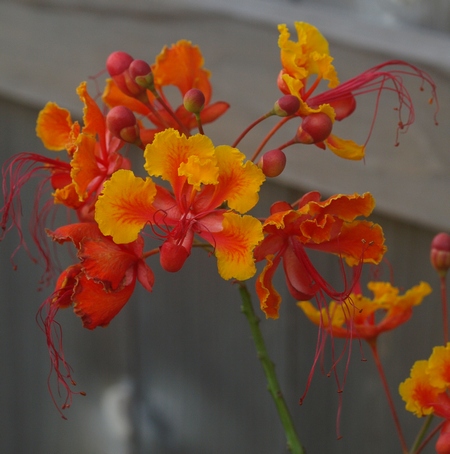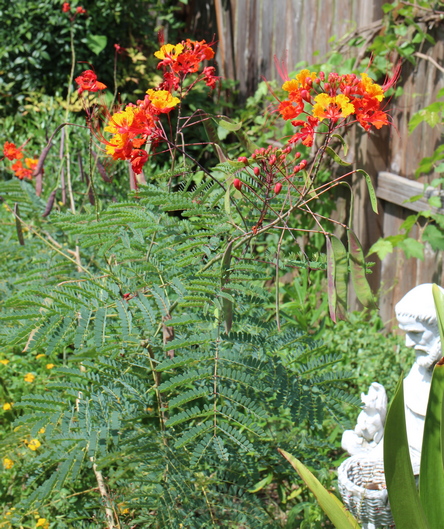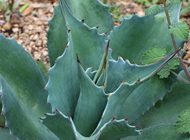 |
Caesalpinia pulcherrima |
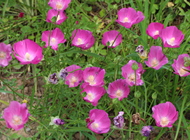 |
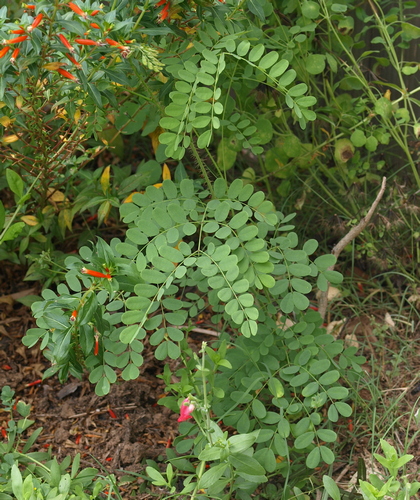
| | Regrowth in late June |
| Common name |
pride of Barbados |
| Family |
fabaceae |
| Life cycle |
tender shrub (Z8-11)   |
| Flowers |
orange-red (summer-fall) |
| Size |
to 8' |
| Light |
sun |
| Cultural notes |
well drained soil |
Heat-loving evergreen plant with attractive red/orange flowers and twice-compound leaves composed of tiny oval leaflets. The flowers, which appear year-round in tropical climates and start up in late summer following a winter die-back, attract hummingbirds. Most likely native to the West Indies, it is frost-tender, likely to die back to the ground when hit by a sustained freeze – but it will generally return from its roots in our Houston climate. This was put to the test in January 2018, when a bad freeze clobbered our tender plants. I thought our pride of Barbados was toast when it still hadn't shown signs of life by mid-spring; however, I suddenly spotted its regrowth emerging underneath some other plants that had moved into its space in late June: sure enough, its roots survived, although the specimen was severely set back. That same week I noticed some plants nicely in bloom at the University of Houston; I guess the few degrees higher temperature in the city allowed those to survive with some of their top growth intact.Our specimen also survived the even severer freeze of 2021; this time, I had protected its base with a good helping of mulch, which allowed it to return by mid-spring, and bloom again by mid-summer. Since then, we've had hard freezes most winters, and even though I've done nothing to protect it, new shoots reliably appear by early spring, with flowers by late May or early June. I suspect that well-established specimens resume active growth more quickly and strongly than younger ones.
Although snow-pea-like seed pods form after blooming, I've not found them to contain viable seeds. I don't know if that's because I grow just one plant; perhaps ours is a sterile variety.
|
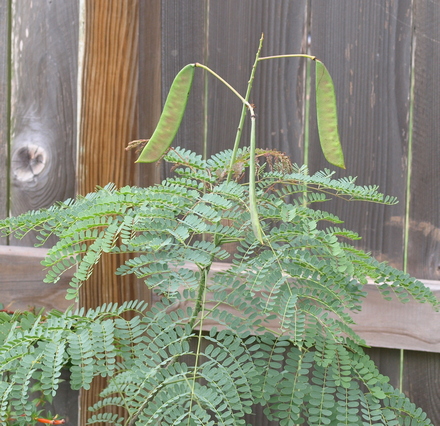
| | Long seed pods develop after the flowers fade |
| 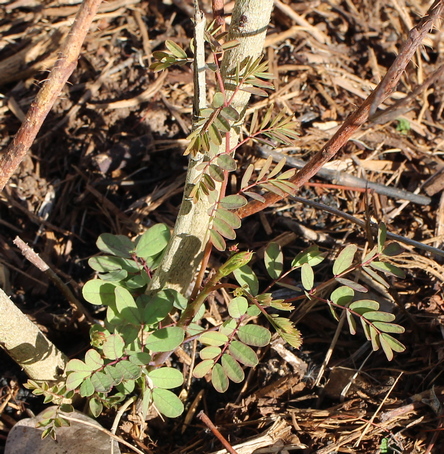
| | After a winter with some moderate freezing nights, new growth pushing up from the base in late March |
|
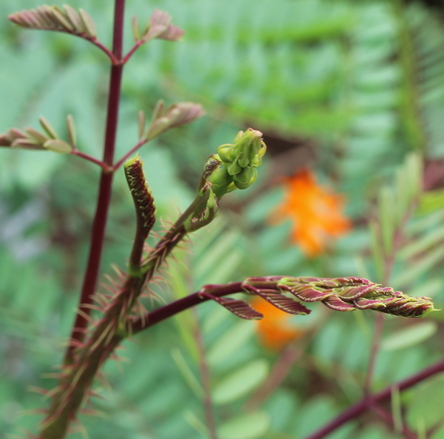
| | Growth spurt in mid-May showing the intricate developing structures of folded leaflets as well as the first beginnings of flower buds... |
| 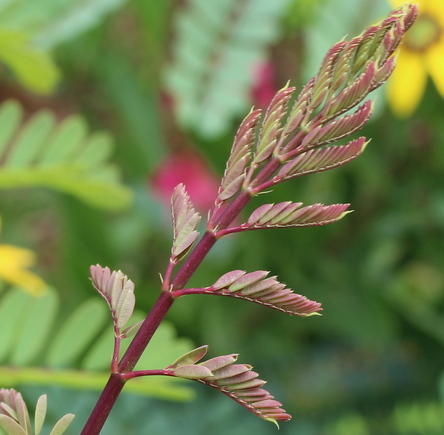
| | ...and a closer-up view of such developing leaflets, with burgundy reverses matching the color of the young stems |
|
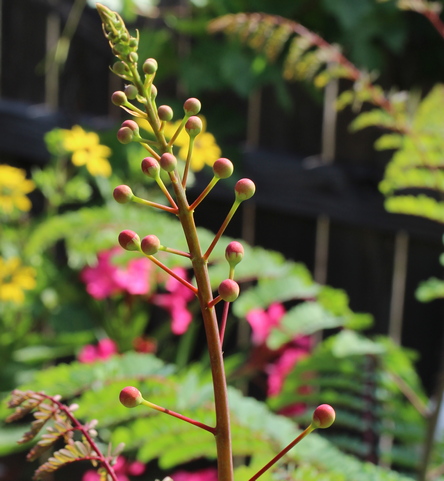
| | Just a week after the previous photos, those flower buds, in all their spherical glory, look ready to pop |
| 
| | I trimmed our specimen back in late summer, and was pleased to see the handsome new foliage that developed through the rest of the season |
|

| | A closer up view of those buds – looking like helmeted alien heads |
|
In our garden, this plant grows in the following area: back fence border About my plant portraits
PlantLinks to other web pages about Caesalpinia pulcherrima
I welcome comments about my web pages; feel free to use the form below to
leave feedback about this particular page. For the benefit of other visitors
to these pages, I will list any relevant comments you leave, and if
appropriate, I will update my page to correct mis-information. Faced with an
ever-increasing onslaught of spam, I'm forced to discard any comments including
html markups. Please submit your comment as plain text. If you have a
comment about the website as a whole, please leave it in my
guestbook. If you
have a question that needs a personal response, please
e-mail me.
Last modified:
May 30, 2025
Contact me
|


